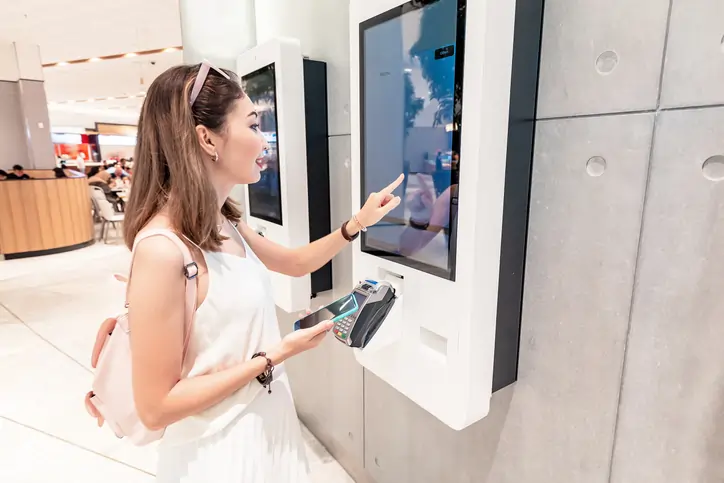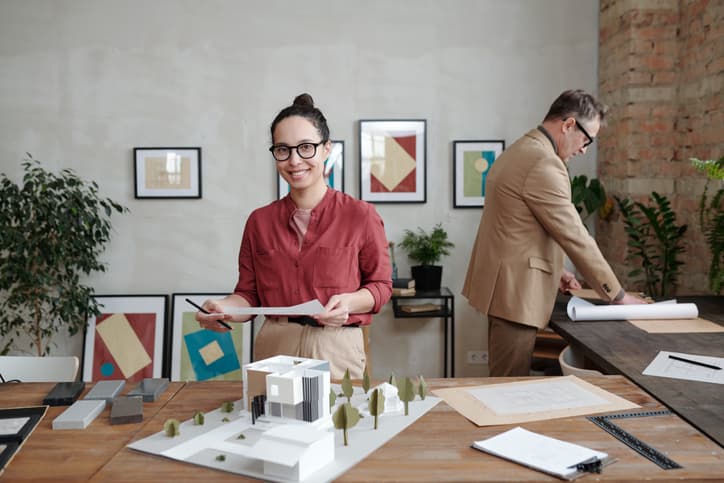
Sign of the times: Digital experiences are moving in-store

Two-in-three shoppers seek inspiration from retailers, and digital screens are emerging as the perfect medium to reveal a brand’s full range of offerings and personalisation options.
Brands may run the slickest campaigns to capture shoppers’ attention on the high street, yet an inescapable truth remains: No matter which adverts customers have seen, or which products they may have shown an interest in, when they walk into a store, two in three are not set on a specific purchase.
Though some may have an idea of what they are looking for, Mood Media’s latest Charting In-Store Trends report found that most shoppers are undecided and open to buying additional items when they cross a store’s threshold. This research surveyed over 8,000 shoppers across key global shopping markets in Europe, the USA and China.
The survey also revealed that customers continue to visit stores for familiar reasons, yet their methods of discovering new products have evolved significantly.
Strolling the high street: Elevating in-store experiences
High street visits remain driven by the desire to interact with tangible products, socialise with loved ones and enjoy the immediate satisfaction of taking purchases home. The in-person experience is enhanced by factors like scent and music, which shoppers identify as key elements for creating enjoyable atmospheres. Additionally, relaxation areas and kids’ play zones provided added appeal, offering spaces for friends to gather and unwind over coffee or for children to play.
At the same time, how customers begin to unearth new products is becoming increasingly more modern and digital. A significant 72% of shoppers are now looking to engaging video content on digital displays to help them make new discoveries and explore personalised purchases, such as size, colour and accessory options.
In most flagship stores, a huge LED “wall” is the first screen a customer sees. This technology helps introduce shoppers to some of the in-store options and creates that “wow” moment cherished by 69% of shoppers, enticing them to venture in and explore further. Additionally, numerous stores feature digital screens showcasing their full product range, luring three-in-four consumers who notice them to contemplate an immediate purchase or later online.
Barrier-free retail
The seamless transition between in-store browsing and online purchasing, and vice versa, is nothing new. Modern shoppers crave versatility, seeking the social thrill of uncovering products in person alongside the convenience of online ordering from the comfort of their homes. They expect the smooth integration of both experiences, like enabling online purchases to be picked up in-store, in-store orders to be arranged for later collection and home delivery for out-of-stock items.
Along with this omnichannel expectation comes a new emerging trend: savvy brands are integrating digital experiences within their physical stores, which entails incorporating technology like interactive screens and displays that become shopping guides while also highlighting new products.
Shoppers have shown they are receptive to messages displayed on the big screens. However, a significant majority (three-in-four shoppers) also want to engage with smaller interactive screens or kiosks. These platforms enable them to browse a variety of products and customise options to their preferences. To appeal to these customer needs,many stores are now implementing these technologies and adding an additional feature for requesting service assistance at the touch of a button. This feature is particularly suited for fashion changing rooms, allowing shoppers to easily summon an assistant for help in selecting an item in a different size or colour.
The integration of digital experiences into physical stores is a two-way exchange. Consumers are not just interested in seeing products showcased on screens or exploring ranges on smaller screens — they also want to leverage their mobile phone capabilities. Three-in-four shoppers express active interest in using their smartphones to navigate a store, with a preference for receiving special notifications about new items and exclusive offers. Additionally, 73% of consumers are interested in using QR codes to scan from a screen and access further information about various products on their mobile devices.
This fusion of the physical and digital shopping experiences highlights the evolving expectations of consumers for unhindered exploration and personalization.. As the traditional boundaries between in-store and online shopping continue to dissolve, retailers are presented with an ideal opportunity to digitally engage with the majority of shoppers who enter a store daily seeking inspiration for their next purchase. Businesses that miss out on their chance to fulfil their consumers’ desires risk falling behind competitors, losing market share and ultimately jeopardising their long-term viability.


